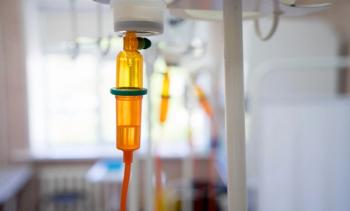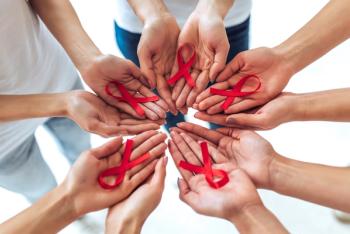
CAR T Offers Clinical Hope but Reimbursement, Access Hurdles Remain
The clinical effectiveness of chimeric antigen receptor (CAR) T-cell therapies adds a new weapon in the arsenal to treat patients with relapsed and refractory disease; however, they come with access, logistical, and reimbursement challenges that make it difficult to treat all the patients who could benefit.
There is a huge unmet need for patients with relapsed and refractory (R/R) cancer and providers face a significant therapeutic challenge treating these patients. However, chimeric antigen receptor (CAR) T-cell therapy has provided some hope for these patients even if there are a number of challenges around these treatments, such as reimbursement and access, explained Zahra Mahmoudjafari, PharmD, BCOP, clinical pharmacy manager, hematology/bone marrow transplant/cellular therapeutics, University of Kansas Health System.
To start, she laid out the landscape for these patients. In general, the 1- and 5-year relative survival for diffuse large B-cell lymphoma (DLBCL) is 65% and 55%, respectively.1 For R/R acute lymphoblastic leukemia (ALL), standard of care only achieves a 16% complete response (CR) and 30% overall response rate (ORR).2 And in multiple myeloma (MM), the median overall survival (OS) was about 6.1 months in 2006-2010.3
The first CAR T-cell products were approved in 2017, although the first-generation CAR T-cell therapies entered the first clinical trials in the 1990s, Mahmoudjafari said. The current patient journey for CAR T-cell treatment begins with leukapheresis, or the collection of blood and T cells, followed by the manufacturing of CAR T cells, which can take 17 to 28 days. During the manufacturing step, the patient is receiving bridging therapy or lymphodepleting chemotherapy to be a better host to the T cells. Then the infusion takes place, after which the patient is monitored for toxicities in the short- (eg, cytokine response syndrome [CRS], neurotoxicity within the first 30 days) and long-term (eg, cytopenia, hypogamma globulinemia > 30 days post infusion).
The logistics of CAR T-cell treatments, plus the fact that each approved product has its own risk evaluation and mitigation strategies (REMS) programs, means CAR T-cell treatment takes a village, said Mahmoudjafari, and requires constant staff training and education. FDA also requires that each facility treatment with CAR T cells keep on hand a minimum of 2 doses of tocilizumab to treat CRS. The patient also needs to stay within 2 hours of the clinic for the first weeks of treatment, she added.
There are numerous logistic challenges with the current process. For one, many of the patients waiting for these therapies don’t “have time to spare” even for the 17 to 28 days it can take to get the CAR T cells back.
In addition, the requirement that patients stay within 2 hours of where they received treatment for the first 4 weeks means some patients are being asked to essentially move temporarily to receive treatment.
Of the FDA-approved therapies, there are 4 CD19-targeting therapies:
- Axicabtagene ciloleucel (axi-cel; Yescarta) to treat adults with R/R LBCL or adults with follicular lymphoma (FL), both after ≥ 2 lines of systemic therapy
- Brexucabtagene autoleucel (brex-cel; Tecartus) to treat adults with R/R mantle cell lymphoma (MCL) or R/R ALL
- Lisocabtagene maraleucel (liso-cel; Breyanzi) to treat adults with R/R LBCL after ≥ 2 lines of systemic therapy
- Tisagenlecleucel (tisa-cel; Kymriah) to treat patients ≥ 25 years with R/R B-cell precursor and adults with R/R LBCL after ≥ 2 lines of systemic therapy
Of the FDA-approved therapies, there are 2 B-cell maturation antigen (BCMA)–targeted therapies. Both idecabtagene vicleucel (ide-cel; Abecma) and ciltacabtagene autoleucel (cilta-cel; Carvykti) are approved to treat adults with R/R MM after ≥ 4 prior lines of therapy.
Looking specifically at the pivotal trials for the indolent lymphomas—brex-cel for MCL, axi-cel for FL, and tisa-cel for FL—Mahmoudjafari said that the responses were very durable in a patient population that is historically difficult to treat.
In the future, CAR T-cell therapy won’t only be a treatment for hematologic malignancies, she said. They’re being studied in solid tumors now and while the data is immature, it’s promising. The global CAR T-cell therapy market was $449.6 million in 2021, and it is expected to grow 35% to nearly $3.8 billion in 2028.
Another future development for CAR T-cell therapy is the study of allogeneic CAR T-cell treatments, which are considered “off the shelf.” The benefit of these therapies is that large quantities can be made from 1 donor and the treatment is on demand. The wait times with current CAR T-cell therapies will go away.
One of the hot debates around CAR T-cell therapies is the role of autologous transplant and whether or not CAR T-cell therapy will replace it. “I think the answer to that is probably ‘yes,’” Mahmoudjafari said.
What about moving CAR T-cell therapies up and into the second line? Just hours after her session,
“So, axi-cel in the second-line setting, I believe, will be a paradigm shift and will likely be the new established standard for a diffuse large B-cell patients and transplant-eligible LBCL,” Mahmoudjafari said.
The results of the other CAR T-cell therapies for LBCL had mixed results. Tisa-cel was not superior to SOC in the BELINDA trial5 for reasons that aren’t clear yet. The median EFS for tisa-cel was 3 months, which was the same as SOC. However, TRANSFORM trial6 found liso-cel was superior to standard of care with median EFS of 10.1 months vs 2.3 months.
The finances remain a challenge too. Is it possible to safely administer CAR T-cell therapy in the outpatient setting? Doing so would be in everyone’s financial interest, but it would require a strong outpatient infrastructure, said Mahmoudjafari. Moving to the outpatient setting would also require the patient and caregiver being up to speed on monitoring for toxicities and knowing a quick way to reach the care team. And members of the care team need to be available during off hours if a patient is experiencing toxicities in the middle of the night.
The cost of these therapies range from $373,000 to $465,000, but that is just for the CAR T. There are additional costs for leukapheresis and chemotherapy before infusion, plus hospitalization, intensive care admission, tocilizumab treatment, and long-term toxicity management, she pointed out. Overall, the actual cost of treatment ranges from $500,000 to $1 million per patient.
Initially, Medicare was reimbursing CAR T-cell therapies at a loss for the institution and commercial payers don’t have a common payment path, although single-case rate agreements have become standard. However, this all remains unsustainable as volumes increase and more patients are treated with more CAR T-cell therapies.
Scientifically, CAR T-cell therapy remains an exciting opportunity. Mahmoudjafari pointed to Emily Whitehead and noted “she’s the reason and her cure’s the reason we have CAR T-cell therapies in their current state.” Whitehead was diagnosed with ALL at age 5 and was the first pediatric patient in the world to receive the treatment. Now, she’s 10 years cancer free. If Whitehead hadn’t made it, CAR T-cell therapies might not have made it either.
“So, CAR T-cell therapy remains an exciting therapeutic opportunity—when you're not thinking about how much it costs,” Mahmoudjafari said.
References
1. Schuster SJ, Svoboda J, Chong EA, et al. Chimeric antigen receptor T cells in refractory B-cell lymphomas. N Engl J Med. 2017;377(26):2545-2554. doi:10.1056/NEJMoa1708566
2. Kantarjian H, Stein A, Gökbuget N, et al. Blinatumomab versus chemotherapy for advanced acute lymphoblastic leukemia. N Engl J Med. 2017;376(9):836-847. doi:10.1056/NEJMoa1609783.
3. Kumar SK, Dispenzieri A, Lacy MQ, et al. Continued improvement in survival in multiple myeloma: changes in early mortality and outcomes in older patients. Leukemia. 2014;28(5):1122-8. doi:10.1038/leu.2013.313.
4. Locke FL, Miklos DB, Jacobson CA, et al. Axicabtagene ciloleucel as second-line therapy for large B-cell lymphoma. N Engl J Med. 2022;386(7):640-654. doi:10.1056/NEJMoa2116133
5. Bishop MR, Dickinson M, Purtill D, et al. Second-line tisagenlecleucel or standard care in aggressive B-cell lymphoma. N Engl J Med. 2022;386(7):629-639. doi:10.1056/NEJMoa2116596
6. Kamdar M, Solomon SR, Amason JE, et al. Lisocabtagene maraleucel (liso-cel), a CD19-directed chimeric antigen receptor (CAR) T cell therapy, versus standard of care (SOC) with salvage chemotherapy (CT) followed by autologous stem cell transplantation (ASCT) as second-line (2L) treatment in patients (pts) with relapsed or refractory (R/R) large B-cell lymphoma (LBCL): results from the randomized phase 3 transform study. Presented at: ASH Annual Meeting & Exposition; December 11-14, 2021; Atlanta, Georgia. Abstract 91.
Newsletter
Stay ahead of policy, cost, and value—subscribe to AJMC for expert insights at the intersection of clinical care and health economics.









































